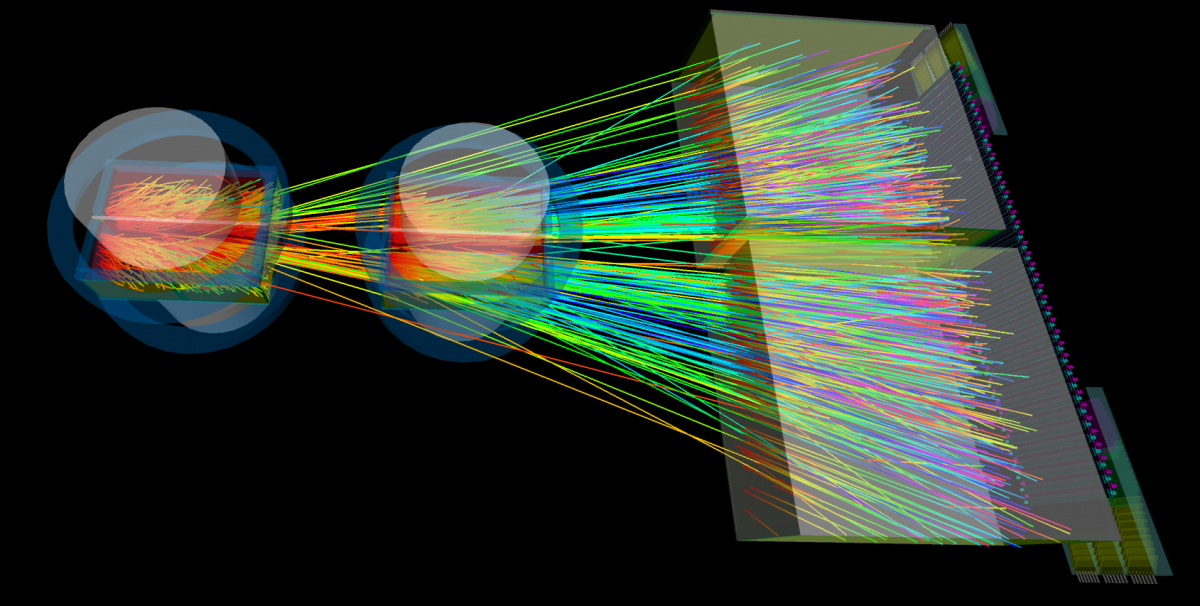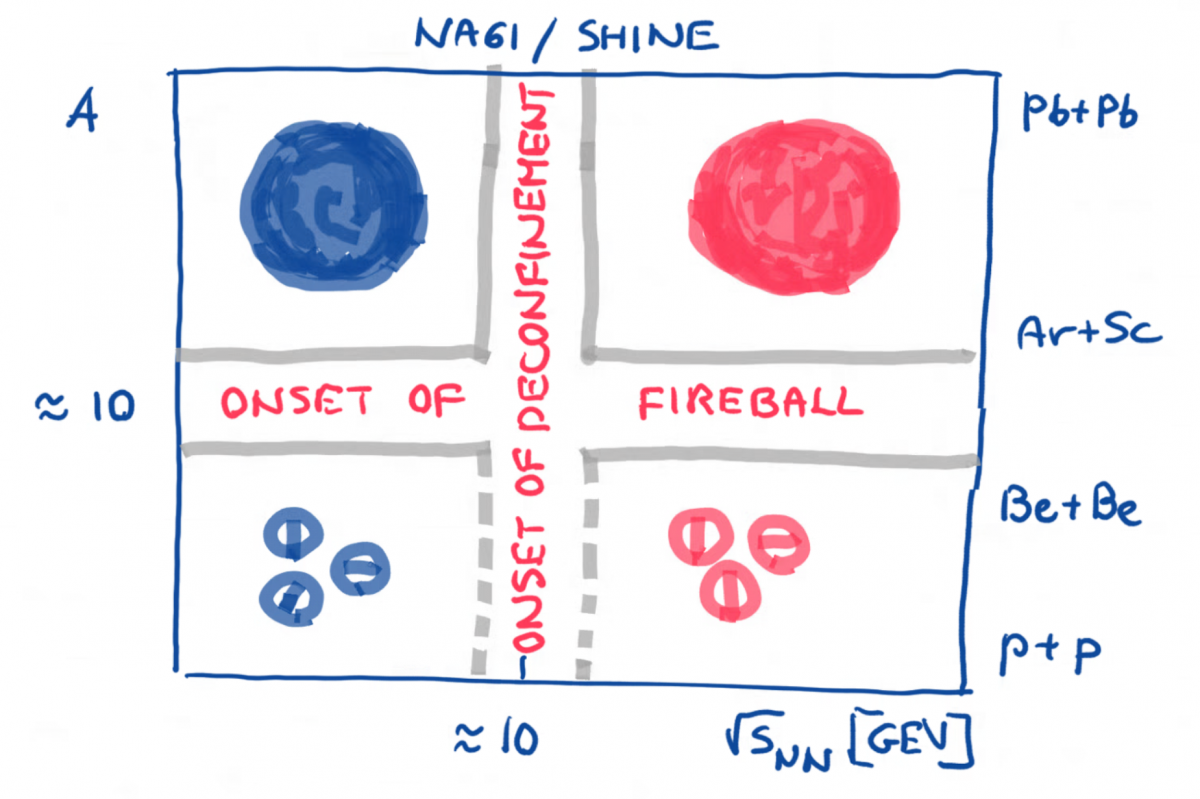A special Xenon run for NA61/SHINE
 Earlier in October, the Large Hadron Collider had a special test run of colliding xenon nuclei; a new flavour compared to the standard proton and lead collisions foreseen in the LHC experimental programme. Xenon collisions were requested by NA61, a fixed target experiment at the SPS and Xenon ions were injected at the LHC for a short test.
Earlier in October, the Large Hadron Collider had a special test run of colliding xenon nuclei; a new flavour compared to the standard proton and lead collisions foreseen in the LHC experimental programme. Xenon collisions were requested by NA61, a fixed target experiment at the SPS and Xenon ions were injected at the LHC for a short test.
Xenon is a noble gas, present in miniscule quantities in the atmosphere. Its atoms consist of 54 protons and between 70 and 82 neutrons, depending on the isotope. The 129Xe collisions in the LHC are therefore similar to the lead-lead collisions that are regularly carried out at the LHC. In that sense collisions between protons look significantly less busy, with fewer particles produced compared to the heavy-ion environment. However, this new run may lead to some surprising discoveries. After all this has been the case in the past when asymmetric proton-lead collisions shown unexpected collective behaviour.
The request for this unusual client of the LHC came from the NA61/SHINE experiment the as part of its research programme on the physics of strong interactions. The xenon ions were injected into the pre-accelerators of the LHC to allow the NA61/SHINE experiment to study in detail the phase transition to a new state of matter where quarks and gluons travel free for very short distances forming the so-called quark-gluon plasma.
In 2009, NA61/SHINE has launched an ambitious programme measuring proton-proton, proton-nucleus and nucleus-nucleus collisions in an attempt to pin down the threshold for actually producing this primordial state of matter and discover the critical point of strongly interacting matter. This is performed by a two-dimensional scan of the phase diagram, by measuring particle spectra and fluctuations as a function of collision energy and system size.

An example of Xe+La collision at 150A GeV/c recorded by the NA61/SHINE experiment (Image Credits: NA61/SHINE collaboration).
For eight weeks, the SPS has supplied xenon ions to the NA61/SHINE experiment allowing physicists to gather more data and carefully map the onset of deconfinement. The Xe+La results will be compared with previous data from p+p, Be+Be, Ar+Sc and Pb+Pb collisions, as well as with NA49 Pb+Pb results. As Marek Gazdzicki, spokesperson of NA61 explains: “With the NA61/SHINE ion program we plan, for the first time in history, to perform a scan with system size and energy. The new data complement what we got from previous runs since 2009 and will allow to cover a broad range of the phase diagram offering valuable experimental results”.
In analyzing the data, researchers are looking for a characteristic “horn” and “step” in collisions of light and medium size nuclei. They try to understand whether these signatures of the onset of this new phase of matter previously observed for Pb+Pb and Au+Au depend on the system size. Secondly, they are searching for the critical point. An increase of signal, the so-called hill of fluctuations, is expected for systems freezing-out near the critical point of strongly interacting matter. Therefore non-monotonic dependence of the CP signal on control parameters (energy and size of colliding nuclei) should allow physicists to locate the critical point.
Figure 1 shows example plots on the system size dependence of the ratio of K+ and π+ yields at mid-rapidity and of the scaled variance of multiplicity distributions, ω[N]. The dashed line shows prediction of Wounded Nucleon Model. Be+Be results were found to be very close to p+p independently of collision energy while there is a jump between light (p+p, Be+Be) and intermediate/heavy (Ar+Sc, Pb+Pb) systems.
It is important to recall that the K+/π+ ratio in proton-proton collisions is lower than all predictions from statistical models while in lead-lead it is in better agreement with predictions for large volume systems. Furthermore, both in p+p and Be+Be collisions at high beam momenta, multiplicity fluctuations turn out to be higher than those predicted by statistical models. However, they are close to their predicted values for large volume systems in central Ar+Sc and Pb+Pb collisions. Thus, the observed rapid change of hadron production properties that emerges as we move from Be+Be to Ar+Sc collisions can be interpreted as the beginning of creation of large clusters of strongly interacting matter. This phenomenon is often referred as the onset of fireball. The extension of the present study and the inclusion of data from Xe+La collisions observed with NA61 will importantly extend knowledge of this phenomenon.
Furthermore, hadron production properties in heavy ion collisions are found to change rapidly with increasing collision energy in the low SPS energy domain, √ sNN ≈ 10 GeV. The NA61/SHINE results shown in Figs. 2 indicate that this is also the case in inelastic p+p interactions and probably also in Be+Be collisions. The phenomenon is labelled as the onset of deconfinement and interpreted as the beginning of creation of quark-gluon plasma with the increase of collision energies.
Thus, the two-dimensional scan conducted by NA61/SHINE by varying collision energy and nuclear mass number of colliding nuclei indicates four domains of hadron production properties separated by two thresholds: the onset of deconfinement and the onset of fireball. The sketch presented in the figure below illustrates the general concepts and the above conclusions.

Two-dimensional scan conducted by NA61/SHINE by varying collision energy and nuclear mass number of colliding nuclei indicates four domains of hadron production properties separated by two thresholds: the onset of deconfinement and the onset of fireball.
With increasing nuclear mass number, the density of clusters in the transverse plane increases. Thus, the probability to form large clusters by overlapping many elementary clusters may rapidly increase with A, the behaviour typical for percolation models. However, this approach does not explain the equilibrium properties of large clusters.
A possible explanation for the onset of the fireball comes from the the AdS/CFT correspondence which could shed further light in our understanding of the strong interaction and the mystery of confiment. Within the AdS/CFT correspondence creation of strongly interacting matter (system of strongly interacting particles in equilibrium) is dual to the formation of a (black hole) horizon and trapping some amount of information from the distant observer. It was found that the formation of the trapping surface takes place when critical values of model parameters are reached. This may serve as a possible explanation of the onset of the fireball phenomenon - only starting from a sufficiently large nuclear mass number the formation of the trapping surface in A+A collisions is possible.
Further analysis of data will tell us if this is the case or only part of a larger picture.
You can read here a full report about the LHC special Xe run from the four LHC experiments.
